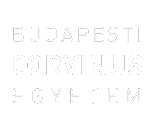Humphreys, Clare (2018) Ethical guidelines for coverage of harmful social media trends. TDK dolgozat, BCE, Újmédia szekció. Szabadon elérhető változat / Unrestricted version: http://publikaciok.lib.uni-corvinus.hu/publikus/tdk/Humphreys_Clare_TDK.pdf
|
PDF
- Requires a PDF viewer such as GSview, Xpdf or Adobe Acrobat Reader
830kB |
Szabadon elérhető változat: http://publikaciok.lib.uni-corvinus.hu/publikus/tdk/Humphreys_Clare_TDK.pdf
Absztrakt (kivonat)
Ethical guidelines have been created and put into effect for media coverage of suicide. Similar guidelines have been drafted regarding coverage of school shootings. However, the media contagion effect is still spreading dangerous trends. This study will use agenda-setting, framing, media contagion and network theories as framework to investigate the ways in which trends which may otherwise be isolated and relatively innocuous can spread to the larger population and become physically or psychologically harmful; even life-threatening. In an analysis of a case-study of the phenomena, the “Tide Pod challenge,” this paper examines the media’s role in spreading this trend through sensationalist headlines. A guideline is proposed for identifying, covering and diffusing the effects of potentially dangerous copycat trends.
| Tétel típus: | TDK dolgozat |
|---|---|
| További információ: | 1. díj |
| Kulcsszavak: | media contagion, journalistic ethics, agenda-setting, reference groups |
| Témakör: | Média és kommunikáció |
| Azonosító kód: | 11206 |
| Képzés/szak: | Communication and Media Science |
| Elhelyezés dátuma: | 20 Jún 2018 10:41 |
| Utolsó változtatás: | 02 Dec 2021 10:52 |
Csak a repozitórium munkatársainak: tétel módosító lap

